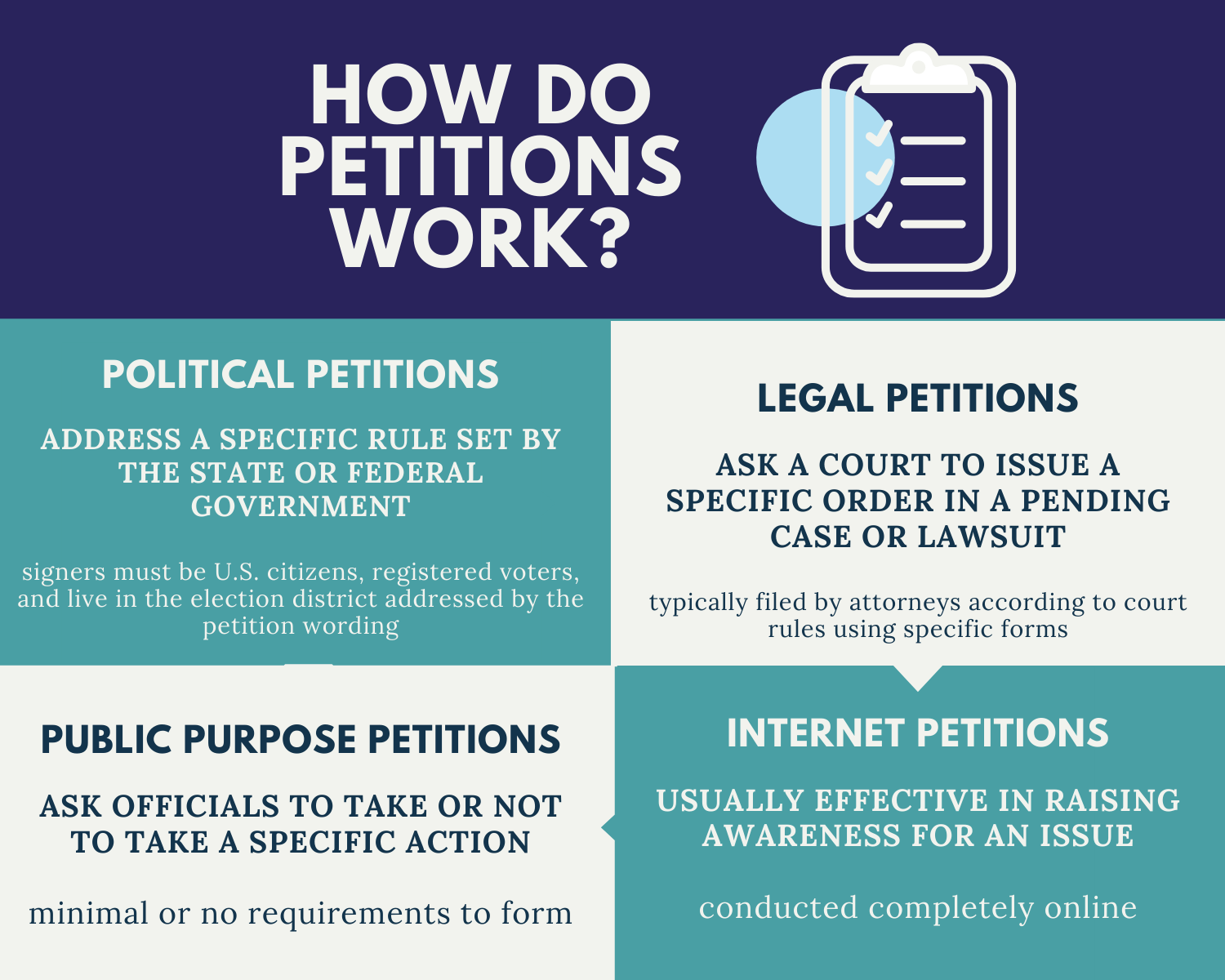How Petitions Work
Infographic by Aleah Antonio. Information from the American Bar Association.
In light of the recent death of George Floyd, multiple petitions surfaced on the internet in order to call for charges against Derek Chauvin, the former Minneapolis police officer who had killed Floyd. Other petitions regarding deaths of Breonna Taylor, Ahmaud Arbery, and other deaths from police brutality are being widely spread through social media, reaching over a million signatures each. Petitions are nothing new and are one of the founding rights that Americans have used to induce social change.
A petition is a request, usually towards a government agency or public official, to do something, whether it be passing a law or filing a lawsuit. Most petitions are usually created to raise awareness about a particular cause. Historically, petitions have mobilized people and reinforced various perspectives. The right to petition is guaranteed to every American, protected under the first amendment of the U.S. Constitution.
According to Elham Gheytanchi, Santa Monica College (SMC) sociology professor, petitions are most effective in “creat[ing] media and political pressure regarding the issue and alliances made by different political groups and constituencies."
"[Petitions are] a great way to inform people and make them directly involved in social change because people have to sign it,” Gheytanchi said.
According to the American Bar Association, four types of petitions exist: political petitions that call for legislative action on a state or federal level; legal petitions that ask courts to issue specific orders in lawsuits; public purpose petitions that "ask officials to take or not take a specific action"; and internet petitions, which are conducted completely online and are the most often used in the modern age.
For petitions to make it to the White House, petitions created on We the People, a petitioning system started under the Obama administration, are required to reach 100,000 signatures within 30 days. Once a petition reaches that threshold, it is to be put into a queue to be reviewed by government officials. However, petitions created under the Trump administration that have reached the threshold have since been unresponded to.
The Black Lives Matter organization is one of the most recent and notable petition spearheads. Their initial call to action was to bring awareness and disproportionate “state sanctioned violence” and racism against African Americans after the Trayvon Martin Murder in 2012. After George Floyd’s murder by police officer Derek Chauvin was caught on tape, and he was not initially charged, citizens began to protest, here in America and worldwide.
Some petitions have utilized smaller but effective forms. University of California, Los Angeles graduate Preston Fusci used Instagram and posted on his birthday for friends and family to endorse the Equal Justice Initiative. Preston included incentives with this petition such as sending texts to donors about his favorite memory with them. He was able to raise over $732 for the cause.
“I decided to endorse for my birthday because after the long string of terrible events that happened this year," Preston said. "Especially with everything going on right now with BLM, I wanted to remind everyone that we can still do some good and try to make the best out of a terrible situation...I found [the Equal Justice Initiative] to be the most transparent with what they do with people's money. So I felt the most comfortable backing that organization up with me and my friends' money,” said Preston.
The popularity of digital petitions has increased over the years. Due to the ease of participation on social media, people have become more involved in causes and display their participation to more people. #BlackLivesMatter has recently been included in over 19 million posts on Instagram. People from all walks of life including celebrities, politicians, and athletes have joined in on the movement to address police brutality and structural racism against African Americans. The overall impact of renewed interest in Black Lives Matter remains to be seen.













